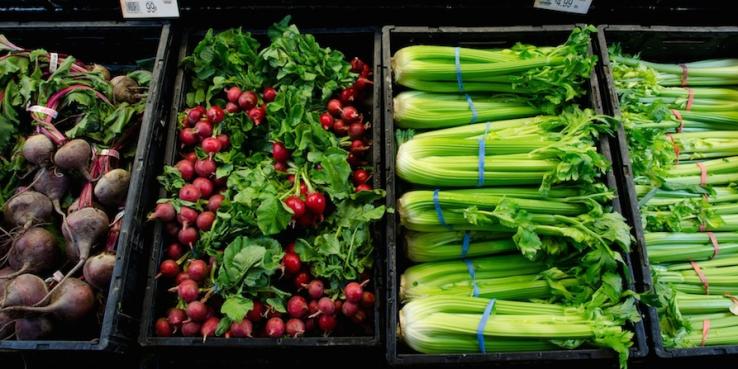Eating fresh fruits and vegetables, is key to health and a high quality of life. But many Bay Area residents struggle to afford these healthy ingredients. In Santa Clara County, 31 percent of households struggle to purchase food, and more than 50 percent of Bay Area adults are overweight. As SPUR highlighted in the report Healthy Food Within Reach, many barriers prevent people from having healthy diets. One of those barriers is affordability — and healthy food, including fruits and vegetables, are often more expensive than other less nutritious food. SPUR recently hosted “Making Healthy Food More Affordable,” a conversation about how to expand access to healthy food by increasing low-income families’ purchasing power in grocery stores and at farmers’ markets.
CalFresh
CalFresh is a federal and state food assistance program that provides low-income families and individuals with supplemental funds to purchase food. In 2013, approximately 441,000 Bay Area residents were receiving CalFresh benefits. While that is a large number of Bay Area residents, it doesn’t represent the full picture of those who could receive benefits. Only 56 percent of people eligible for CalFresh are enrolled in the program. One way to improve access to healthy food is to increase enrollment of eligible individuals, something that numerous non-profits and public agencies are working toward.
Increasing the Food Budget
To increase economic access to healthy foods, SPUR and other nonprofits are working to increase food budgets. The oldest and most widespread initiatives in California are at farmers’ markets under the name Market Match. Begun in 2009, Market Match empowers those receiving federal nutrition benefits, by matching funds to increase their fresh fruit and vegetable purchases.
This fall, SPUR is launching a California pilot of Double Up Food Bucks, a healthy food incentive program that will give CalFresh holders $1 for every $1 spent in grocery stores on California-grown fruits and vegetables, up to $10. Currently, we are anticipating that the participating grocery stores will include Food Bowl 99 in San Jose and two Arteaga’s Food Center stores in San Jose and Gilroy.
In addition to retail grocery stores, CalFresh is now accepted at many Bay Area farmers’ markets, including all markets run by the Pacific Coast Farmers’ Markets Association. CalFresh users simply swipe their CalFresh cards at the markets’ information booths, and receive scrip to purchase fresh produce. Shoppers can use the Ecology Center’s Farmers’ Market Finder, to find the closest markets that accept CalFresh, WIC, and Market Match incentives.
Market Match provides incentives for CalFresh customers to purchase fresh fruit and vegetables at farmers’ markets. Even those that live far from farmers markets can use Market Match when Freshest Cargo, Fresh Approach’s food truck, stops in their community. Freshest Cargo ensures that even those that live far from farmers’ markets can still purchase Bay Area-grown fruits and vegetables.
In 2014, Market Match was used at more than 150 farmers’ markets, and more than 75 percent of CalFresh customers reported increasing their produce purchases because of the incentive program. Additionally, the program has increased farmers’ sales by more than 81%, and stimulated the economy by approximately $4.3 million. With this encouraging feedback, the Ecology Center, Fresh Approach, and SPUR continue their advocacy for affordable food policies, and expansion of programs that increase our community’s access to healthy foods at farmers’ markets and grocery stores.
To learn more, read the SPUR report Healthy Food within Reach and visit the Market Match and Fresh Approach websites.
